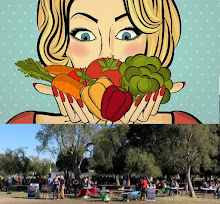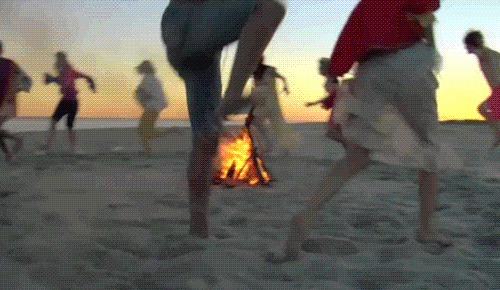- Samsara is the endless swirling and cycling through the Ocean or Wheel of Rebirth and Suffering, which inundates us with various floods (ogha, a name for the four cankers).
The Vipassanā (Insight Meditation) organization of S.N. Goenka released a short, animated cartoon on YouTube, created around a story that Goenka tells during a discourse on his famous free 10-day silent Buddhist meditation retreats.
Whether one hears this story during a 10-day course or through this video, it is easy to get drawn in. Goenka-jii is a very engaging storyteller, and we can sense his audience of intensive meditators is with him when we hear them laughing along.
The narrative is simple enough: a learned professor traveling by ship provides daily lectures, which are attended by an old sailor. One day, after his talk, the professor asks if the sailor has studied geology. The sailor replies in the negative. The professor informs him that he has wasted one quarter of his life.
After his talks on the subsequent two days, he inquires about the sailor’s knowledge of “oceanology” (oceanography) and meteorology. With each negative response, the professor tells the old man he has wasted a quarter of his life, now up to three-quarters in total, because he hasn’t studied the science of the earth he lives on, the sea he sails on, or the weather around him.
The old sailor is in awe of the professor’s knowledge and erudition. He takes the criticism to heart, each time drooping his shoulders and feeling sorry for himself.
The next day the old sailor rushes in and asks the professor if he has every studied “swimology.”
The professor gruffly tells him he’s never even heard of it. The old sailor asks more simply: “Can you swim, sir?”
When the professor regrets to admit that he can't, the old sailor informs him that in that case, he has wasted his whole life, because the ship is sinking. Only those who can swim to shore will survive.
Life lesson
 |
| The Old Sailor (Evgeniy Monahov) |
But others hearing it in context may understand. In the context of a Buddhist meditation retreat can begin to see its underlying message.
It becomes clear: The story highlights the value of what Goenka often refers to as “the practical aspect of Dhamma,” the Buddha's Dharma or Doctrine (Training).
It is inspiration to practice Dhamma seriously and starting today, not tomorrow when troubles are upon us.
There are likely many lessons to take from the story. We can apply it to the role of practice in daily life.
For some, it emphasizes the importance of time on the meditation cushion actually putting into practice what the Buddha taught over intellectual learning and academic pursuits, while for others it illustrates the importance of practicing Dhamma over everything else in life.
In either case, the story reinforces motivation in Goenka’s mission that prioritizes formal meditation practice.
This focus is not Goenka’s perspective, nor is it only Theravada training and the lineage. It is the Buddha's key message.
- We can count other people's cows or mind our own. What makes a better shepherd?
Interest in Buddhist insight meditation in the U.S. from the 1960s onwards, particularly the ancient Theravada tradition in Burma (Myanmar) and Thailand (Siam) is growing among Western students, who were mostly young hippies and are now seasoned practitioners.
The focus was largely on on-the-cushion meditative calm and insight. So Goenka is in good company to emphasize sitting practice. The precious Dhamma, the Buddha's Teaching preserved in the Pali language canon, that Goenka brought to the world has been one of the greatest catalysts for the spread of beneficial practice in non-Buddhist countries by non-Buddhists.
- Buddhism may not even be a religion (depending on how we define "religion") because it is a practice anyone can do and benefit from, benefiting all the more by adhering to one's own religion/identity. Dhamma is like learning to breathe, to be calm, to develop insight, to be mindful of one’s karma. Everyone benefits. This is as the Buddha wanted it to be: a benefit for ALL.
This is not to say that he and his organization are faultless, perfect, or the best that could have been. Both were a success, however, and they survive and are growing.
His swimology story is a springboard that can also illustrate how we might take this focus on practice to an extreme and go too far. Is there room for intellect, explanation, study, questioning? (This is the route of jnana yoga or wisdom-over-faith activities in a world that is all about blind faith).
If we could not question and study and think over, if instead we suppressed theoretical study and critical thought, we'd be doomed. Do we have such good teachers that we can trust completely to know better than us and guide us/tell us what's best? No.
The West is meant to question, meant to think, meant to follow the Kalama Sutra on independent thinking and contemplation.
Who can teach the Dhamma?
It’s refreshing to see a generous organization that teaches this ancient path of liberation. Ten day meditation courses are free.
- Take a free 10-day Goenka course (dhamma.org)
Goenka endeavored to reach a wider audience by using modern technology. As with any video production, a shift opens us up to an analysis of its imagery. Animators are required to make certain choices with a visual medium that does not arise in oral storytelling. CONT'D BELOW
How do I find a free course?
Vipassana, which means to see things as they really are, is one of India's most ancient techniques of meditation (cultivation). It was taught in India more than 2,500 years ago as a universal remedy for universal ills (i.e., an Art of Living).
For those who are unfamiliar with Insight Meditation, an Introduction to Vipassana by Mr. Goenka, related videos, and Questions & Answers about Vipassana are available.
Courses
The technique is taught at 10-day residential courses, during which participants learn the basics of the method and practice sufficiently to experience its beneficial results.
There are no charges for the courses -- not even to cover the basic costs of food and accommodation. All expenses are met by donations from ("old students") people who, having completed a course and experienced the benefits, wish to give others the opportunity to also benefit. More: Vipassana Meditation
Complaining (continued)
In this particular case, there are some glaring issues in the animators’ choices. Foremost is the disappointing decision to make the erudite, apparently well-to-do professor pale-skinned, whereas the poor, uneducated sailor is dark-skinned.
At a time when our awareness (consciousness) of implicit bias, discrimination, stereotyping, and the inadvertent perpetuation of racism has been raised not only in the U.S. but around the world, moving some meditation traditions — though not all — to examine bias and privilege within their communities, the decision to assign skin color according to race is both oblivious and disheartening, to say the least.
Goenka, we want our money back! But the courses were free, and you could not even donate until you became an "old student" by completing one. (Oh, yeah, huh?)
Another questionable decision by the animators concerns the literal death of the academic, which is only inferred in the oral telling. But the animators chose to depict the water climbing up and engulfing the professor, drowning him as the sailor swims away. The macabre scene of a human, even a cartoonish one, realizing he will soon die — and then actually drowning — is disturbing to say the least. It doesn’t help that the sound dubbed in is of students laughing, as if they were watching.
It’s in the background and seems downright creepy. At this point, those sympathetic to Goenka’s message might agree that the moral of the story (which, yes, includes death for those who do not learn and practice) could and should be achieved less morbidly. It’s a cartoon after all.
There’s the minor issue of misspelling “meteorology” as “meterology” in large letters on one of the plaques highlighting each of the professor’s “-ologies.” Though Goenka’s non-native English [which sounds Transylvanian during the course to our ears] makes pronunciation sounds like “meterology,” is that any reason to misspell? So few words go on an animation screen, allowing a simple spelling error to create an unnecessarily amateurish impression, whether it was due to an oversight or overzealous fealty to a teacher.
Finally, there is another issue to consider. When the sailor informs the professor about the sinking ship, in the oral version, Goenka gives no explicit indication of the sailor’s state of mind. Yet, he does say, “The next day, it was the turn of the old man,” which suggest some payback for the put-downs.
Was the old sailor feeling smug that the professor was finally going to get his after bearing with humility his insults (perhaps suggesting the working out of karma)?
Or was the old sailor genuinely concerned about the professor’s wellbeing? Maybe he was innocently (even humorously) informing him about a basic field of study he had missed in spite of the dire situation?
Goenka does not give any indication in the oral version, so assigning the old sailor a one-sided facial expression in this video version fleshes out the story’s meaning — especially since the animators had already gratuitously gone one step further than Goenka’s original by showing the actual death of the professor. (Do better, animators!) Or maybe we're overthinking it.
- Source: The Science of Swimology
- Goenka (Dhamma.org); Insight Myanmar edited by Wisdom Quarterly






















































































































































































































































No comments:
Post a Comment